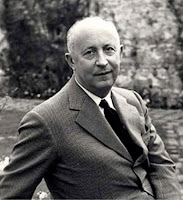Three iconic Parisian women who embody these attributes are Coco Chanel, Brigitte Bardot and Ines de la Fressange.
For nearly a hundred years, Coco Chanel has been associated with every piece of clothing we consider stylish, and with many other things we've never given a thought to. Take a look in your closet. If you have a collection of jackets to toss on over a pair of jeans, that's Chanel. Any little black dress (LBD) is a direct descendent of Chanel's 1926 original. Anything jersey? Clustered strands of pearls? Chanel again.
Coco Chanel was simple elegance. She ran screaming from fashion fads. Her interesting life formed who she was: strong-headed, elegant, opinionated, passionate, and entirely French. She began her life raised in a Catholic orphanage monastery where she learned the art of being a seamstress; at 18 she became a cabaret singer. She was a mad chain smoker who never married, but was mistress to several men throughout her lifetime. Hat designer, perfumer, entrepreneur and pioneer also defined her.

In more modern times, Brigitte Bardot was the epitome of the French bombshell. Bardot straddled the line between the girly waifs of the '60s and the sex kittens of the '70s with little more than a crescent-moon smile and a flick of black liquid eyeliner.
Bardot had a way of tossing herself together and making it work. Piling her hair on top of her head or holding it in place with a wide headband; a swipe of lip gloss and eyeliner, and she was off. She had a distinct way of making a cardigan, cropped jeans and ballet flats look sexy and chic. The Bardot neckline - a wide open neck that exposes both shoulders - was named after her.
To many, Ines de la Fressange is what "Parisian" looks like. A model, fashion and accessories designer, fashion consultant, businesswoman and author, de la Fressange is almost six feet tall, 125 pounds and hipless. She is said to drink wine, lots of strong espresso, and never diet. One of her signature looks - a navy crew-neck sweater, rolled up jeans and brown loafers - makes her look elegant-casual.

She was interviewed recently and offered 10 lessons to master the "offbeat look a la Parisienne." Among them: wearing jeans with gem-encrusted sandals, never sneakers; a pencil skirt with ballet flats, not heels; a sequined sweater with men's trousers, not a skirt; an evening dress with a straw handbag, not a gold clutch; or a chiffon dress with battered biker boots.
The Parisian influence on style is classic, casual, innovative and effortless at the same time. In the words of Ines de la Fressange:
"Fashion is constantly evolving, and that's what makes it so interesting."


































